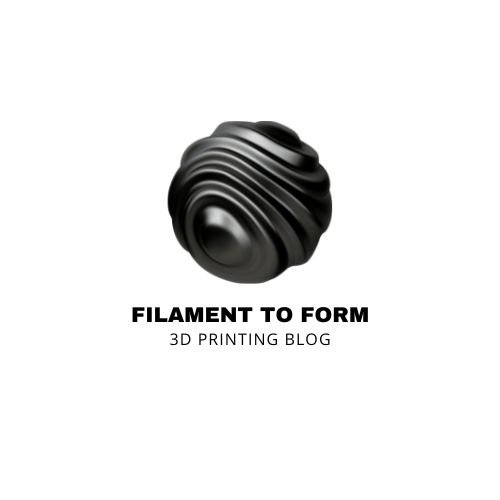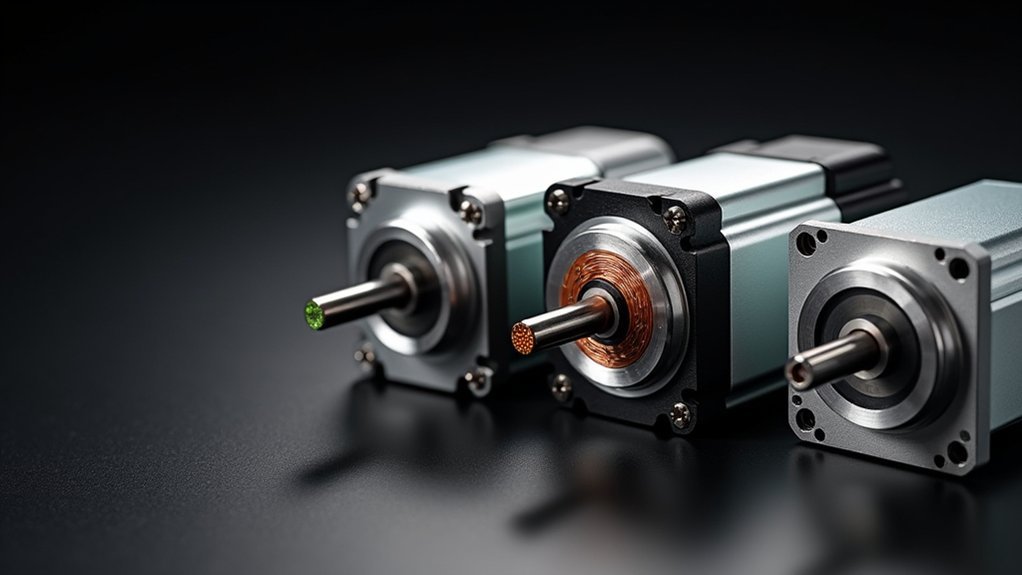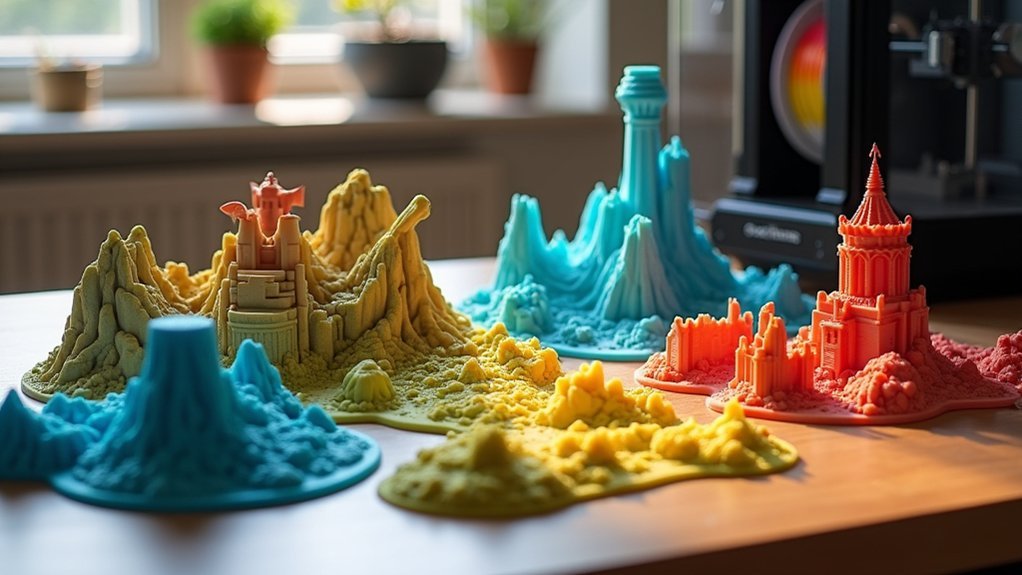When you’re working on precision engineering projects, your standard stepper motors might be holding you back from achieving the accuracy you need. Whether you’re building CNC machines, 3D printers, or robotic systems, the difference between basic and high-performance motors can make or break your project’s success. The right upgrades won’t just improve your precision—they’ll transform how your entire system performs under demanding conditions.
Longruner 5X Geared Stepper Motor 28byj 48 with ULN2003 Driver Board
If you’re building multiple precision projects simultaneously or need backup motors for critical applications, the Longruner 5X Geared Stepper Motor kit delivers exceptional value with five complete 28BYJ-48 motors and ULN2003 driver boards. Each motor features a compact 1.1-inch diameter with 5.625-degree stepping angle and 1/64 reduction ratio for precise control. You’ll appreciate the universal compatibility with Arduino, Raspberry Pi, STM32, and other microcontrollers. The driver boards include four-phase LED indicators that display real-time motor status, making troubleshooting straightforward. With 8-inch cables and organized packaging, you’ll have everything needed for immediate deployment across multiple engineering projects.
Best For: Engineers, hobbyists, and students working on multiple robotics or automation projects who need reliable stepper motors with precise control and universal microcontroller compatibility.
Pros:
- Excellent value with 5 complete motor and driver sets for multiple projects or backup applications
- Universal compatibility with popular microcontrollers including Arduino, Raspberry Pi, and STM32 platforms
- Built-in LED indicators on driver boards provide real-time visual feedback for easy troubleshooting and status monitoring
Cons:
- Limited torque output due to small 1.1-inch motor diameter may not suit heavy-duty applications
- Relatively low precision with 5.625-degree stepping angle compared to higher-resolution stepper motors
- Short 8-inch cable length may require extensions for projects with distributed component layouts
ELEGOO 5 Sets 28BYJ-48 ULN2003 5V Stepper Motor + Driver Board (Compatible with Arduino)
The ELEGOO 5 Sets 28BYJ-48 ULN2003 stepper motor bundle delivers exceptional value for beginners and educators seeking reliable precision components without breaking the bank. You’ll get five complete motor-driver sets with solid aluminum construction and 64:1 gear ratios providing 32 steps per rotation. The ULN2003 driver boards feature A, B, C, D phase LED indicators for easy troubleshooting. You can connect these directly to Arduino or Raspberry Pi without soldering, making them perfect for educational projects, 2D/3D printers, and automatic curtain systems. While they’re limited to low-speed applications, their high torque and accuracy suit most hobbyist precision engineering needs excellently.
Best For: Beginners, educators, and hobbyists looking for affordable, easy-to-use stepper motors for educational projects, 2D/3D printers, and precision automation applications that don’t require high-speed operation.
Pros:
- Complete plug-and-play setup with no soldering required and LED indicators for easy troubleshooting
- Excellent value with five complete motor-driver sets featuring solid aluminum construction and high torque output
- Wide compatibility with Arduino, Raspberry Pi, and other microcontrollers for versatile project applications
Cons:
- Limited to low-speed applications and not suitable for high-RPM or industrial-grade requirements
- Documentation could be improved with better schematic data for coil connection identification
- Requires additional male-to-female cables when using multiple stepper drivers simultaneously
STEPPERONLINE 51:1 Planetary Gearbox Nema 17 Stepper Motor
Engineers seeking exceptional torque output for precision applications will find the STEPPERONLINE 51:1 Planetary Gearbox Nema 17 Stepper Motor delivers an impressive 4Nm holding torque through its 50.9:1 gear reduction system. You’ll achieve 0.035-degree step precision with minimal backlash (≤1 degree), making it ideal for CNC feed mechanisms and automation projects requiring accurate positioning. The 1.68A rated current and 73% efficiency provide reliable performance, though you’ll need to manage the 620g weight during installation. While mounting holes don’t follow standard NEMA 17 patterns, the hardwired connection guarantees consistent electrical contact for demanding applications.
Best For: Engineers and makers working on CNC machines, automation projects, or precision positioning systems that require high torque output at low speeds with accurate step control.
Pros:
- Delivers exceptional 4Nm holding torque with precise 0.035-degree step angle for accurate positioning
- 73% efficiency with minimal backlash (≤1 degree) ensures reliable performance in demanding applications
- Robust planetary gearbox design handles significant axial (50N) and radial (100N) loads
Cons:
- Heavy 620g weight and non-standard mounting holes complicate installation compared to typical NEMA 17 motors
- Hardwired connections instead of detachable harness reduce flexibility for maintenance and replacement
- Plastic gear components may limit long-term durability under continuous high-torque operations
Factors to Consider When Choosing Stepper Motor Upgrades for Precision
When you’re selecting stepper motor upgrades for precision engineering, you’ll need to evaluate several critical specifications that directly impact your project’s performance. Your choice depends on analyzing step angle precision for accuracy requirements, determining adequate torque levels, selecting appropriate gearbox ratios, and understanding current rating specifications. You must also consider backlash tolerance levels, as even minimal play can compromise the precision your application demands.
Step Angle Precision
Since positioning accuracy directly impacts your project’s success, step angle precision becomes the foundation of any stepper motor upgrade decision. Smaller step angles deliver finer control—a motor with 0.035-degree steps provides 102.86 steps per revolution, dramatically enhancing positioning accuracy. You’ll find motors like the 28BYJ-48 offer 5.625-degree stepping angles with 1/64 reduction, enabling 64 microsteps for improved resolution.
Microstepping techniques can further divide each full step into smaller increments, boosting positional precision for demanding applications. This precision proves critical in CNC machines and robotics where minor deviations cause significant output errors. However, you must balance step angle requirements with torque capabilities—higher precision often reduces torque output, potentially limiting performance in load-bearing applications.
Torque Requirements Analysis
Torque requirements form the mechanical backbone that transforms precise step angles into reliable motion under load. You’ll need to analyze holding torque specifications carefully, as motors delivering 4Nm provide the stability essential for maintaining position accuracy during operation. Don’t overlook gear ratios when calculating torque output—higher ratios like 50.9:1 multiply your available torque considerably, though they’ll reduce speed proportionally.
You must understand maximum permissible torque and allowable torque ratings to prevent performance degradation under varying loads. These specifications directly dictate your motor’s capability to handle demanding applications without compromising precision. Consider motors with 73% efficiency ratings, as they’ll generate less heat while delivering consistent torque, ensuring reliable long-term performance in your precision engineering projects.
Gearbox Ratio Selection
Although gear ratios fundamentally alter your stepper motor’s performance characteristics, you’ll find that selecting the ideal ratio requires balancing competing demands between torque multiplication and speed reduction. For precision engineering applications like CNC machines and robotics, you’ll want ratios of 50:1 or higher to achieve the substantial torque increases necessary for high-force operations.
When choosing your gearbox ratio, consider your project’s operational speed requirements since higher ratios proportionally reduce output shaft rotation. You’ll need to prioritize backlash specifications, targeting ratios with ≤1 degree backlash for maximum precision and repeatability in motion control tasks. Don’t overlook efficiency ratings either—selecting gearboxes with higher efficiency ratings like 73% minimizes energy losses and enhances overall system effectiveness.
Current Rating Specifications
Current rating specifications represent one of the most critical parameters you’ll evaluate when upgrading stepper motors for precision engineering projects. A motor’s current rating, measured in amperes, directly determines its torque output and load-handling capacity. Higher-rated motors, like those operating at 1.68A, deliver greater holding torque essential for maintaining precise positioning under varying loads.
You must carefully match your motor’s current rating with your driver’s capabilities. Exceeding the driver’s current limit causes overheating and component failure. Operating within specified current ranges guarantees peak performance while protecting your equipment.
Understanding how current specifications affect inductance values helps you predict motor response to current changes, improving control precision for applications requiring fine adjustments and consistent positioning accuracy.
Backlash Tolerance Levels
When precision engineering demands micrometer-level accuracy, backlash tolerance becomes the defining factor that separates successful projects from costly failures. You’ll need tolerances under 0.5 degrees for high-precision applications like CNC machining, where positioning errors can ruin expensive workpieces.
Planetary gearbox systems offer your best bet for minimal backlash, typically achieving 1 degree or less. However, you’ll face a trade-off: higher torque stepper motors often introduce increased backlash due to their mechanical construction. You must balance your torque requirements against precision needs.
Don’t overlook maintenance’s role in controlling backlash. Proper component alignment and regular upkeep prevent gradual tolerance degradation. Choose gearbox designs specifically engineered for low backlash when your project demands consistent, repeatable positioning accuracy.
Driver Board Compatibility
Driver board compatibility determines whether your precision stepper motor upgrade succeeds or fails catastrophically. You must match your driver board’s voltage and current ratings to your motor’s specifications to prevent damage and performance degradation. Unipolar and bipolar stepper motors require different driver boards that accommodate their distinct wiring configurations and control methods.
Ensure your driver board’s interface aligns with your microcontroller or development board. Unipolar motors typically need standard interfaces for seamless connection. Select driver boards with LED status indicators—they’ll provide essential feedback during setup and help you troubleshoot operational issues quickly.
Don’t overlook additional components like connection cables or adapters that may be required for proper interfacing. Plan for a complete setup from the start to avoid compatibility surprises.
Physical Size Constraints
Physical dimensions make or break your stepper motor upgrade before you even consider electrical specifications. You’ll need to verify frame size compatibility first—Nema 17 motors measure 42 x 42 mm, which might not fit your existing mounts. Check motor length carefully; 48 mm units can create clearance issues in compact designs. Don’t overlook diameter requirements either—the 28BYJ-48’s 1.1-inch diameter demands adequate housing space.
Weight becomes critical with heavier motors reaching 620g, potentially requiring structural reinforcement or mounting modifications. You must also account for gearbox additions, which can extend overall length by 42.7 mm or more. Measure your available space thoroughly and compare it against complete motor assembly dimensions, including any attached gearboxes, before committing to an upgrade.
Application Speed Requirements
Although stepper motors excel in precision applications, they’ll limit your project’s maximum operational speeds compared to servo motors or DC alternatives. You’ll need to carefully evaluate your application’s speed requirements against the motor’s capabilities. Most stepper motors perform best at low to moderate speeds, making them perfect for CNC machining and 3D printing where precision trumps velocity.
Consider how stepping angles affect your project’s resolution—smaller angles like 5.625 degrees provide finer positioning control. Gear ratios greatly impact performance; a 64:1 reduction enhances torque while reducing output speed. You’ll also want to examine torque-speed curves, as many steppers maintain better torque at lower RPMs. Match your specific speed and torque requirements to guarantee ideal performance without compromising your precision engineering project’s accuracy.
Frequently Asked Questions
How Do I Calculate the Required Torque for My Specific Precision Engineering Application?
You’ll calculate required torque by determining your load’s inertia, friction forces, and acceleration requirements. Use the formula: Torque = (Inertia × Angular Acceleration) + Friction Torque, then add safety margin.
What’s the Difference Between Microstepping and Full-Step Modes for Precision Work?
You’ll get smoother motion with microstepping since it divides full steps into smaller increments, reducing vibration and increasing positional accuracy. Full-step mode provides maximum torque but creates jerky movement for precision applications.
Can I Use These Stepper Motors in High-Temperature Industrial Environments?
You’ll need high-temperature rated stepper motors with specialized windings and bearings for industrial environments. Standard motors typically fail above 80°C, but industrial-grade versions can handle temperatures up to 200°C safely.
How Do I Properly Tune Stepper Motor Acceleration and Deceleration Curves?
You’ll start with conservative acceleration values, then gradually increase while monitoring for missed steps. Use S-curve profiles instead of linear ramps to reduce vibration and improve accuracy in your motion control system.
What Power Supply Specifications Are Needed for Optimal Stepper Motor Performance?
You’ll need a power supply that’s 2-3 times your motor’s rated voltage for best torque curves. Guarantee sufficient current capacity, typically 150-200% of motor rating, with stable regulation and low ripple for consistent performance.





Leave a Reply